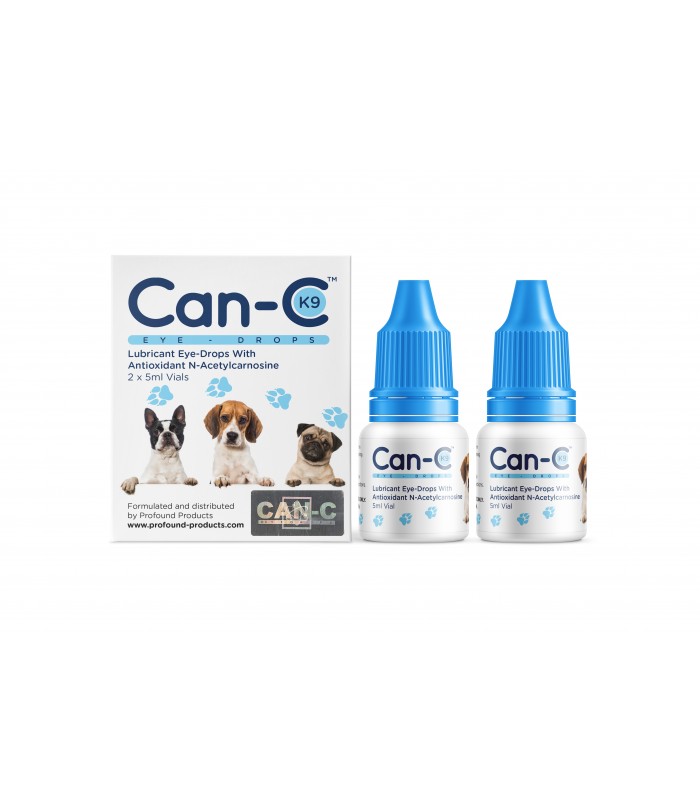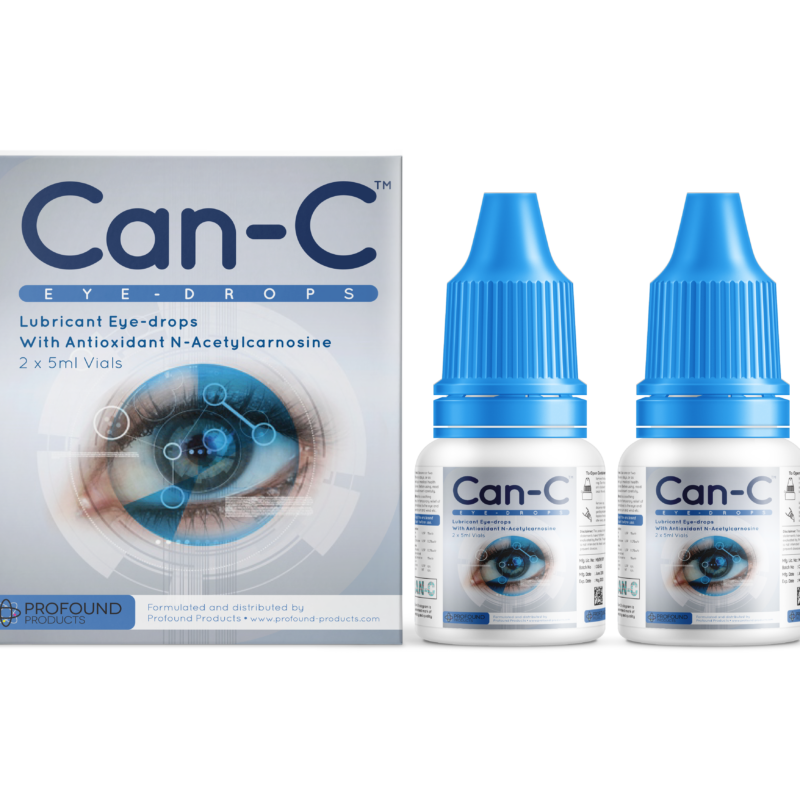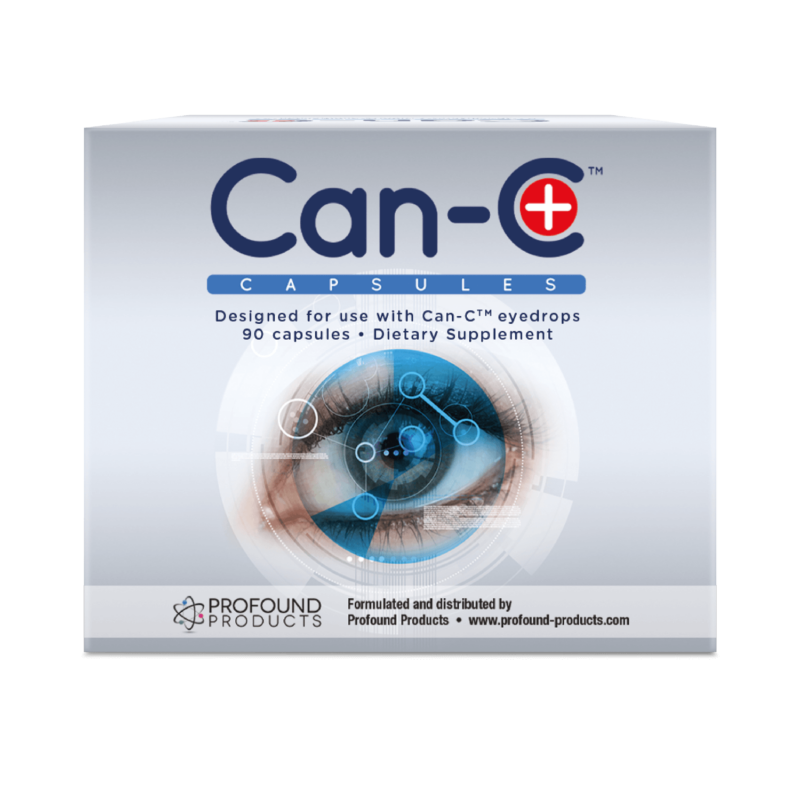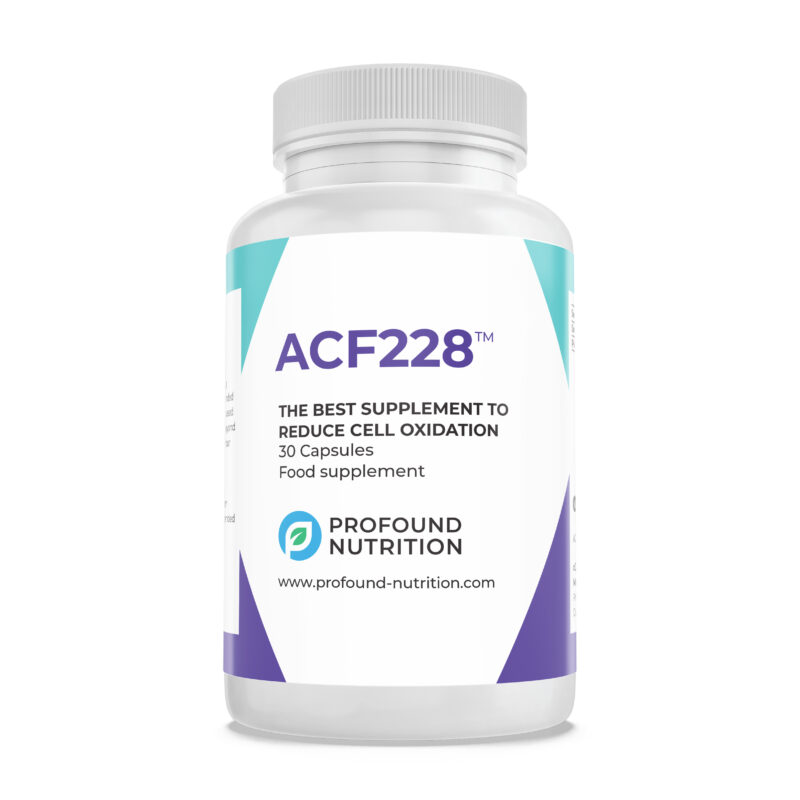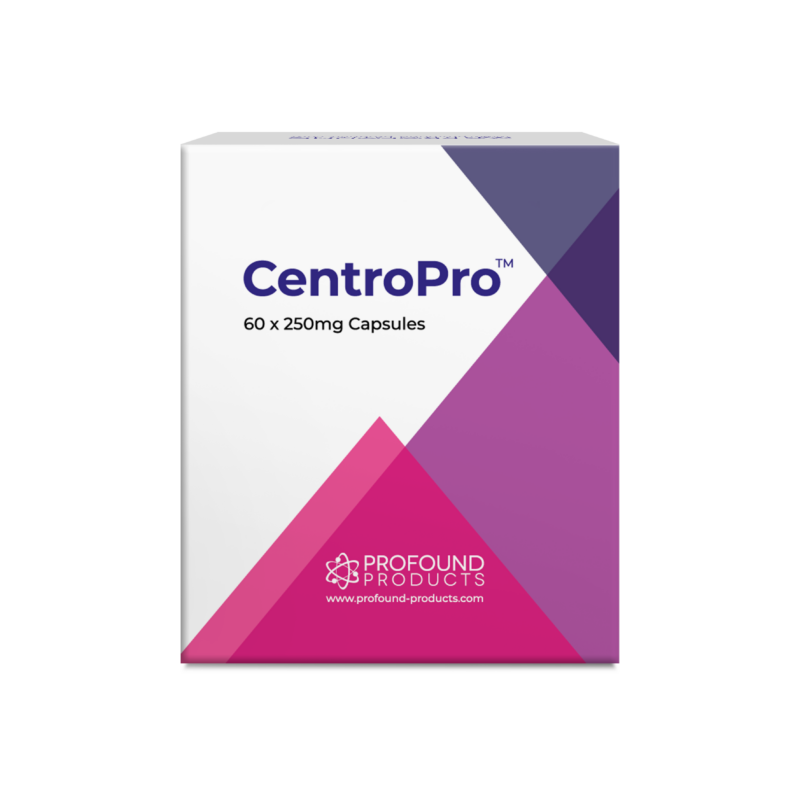What your doctor can’t tell you about free radicals
At Honolulu’s oldest hotel, the Moana Surfrider, I scheduled a meeting with Dr. S., a prominent eye surgeon. He was enjoying his visit to the Hawaiian Islands by taking a much-deserved break from his busy practice. His specialty was cataract surgery and I surmised from his expensive clothes and visit to Hawaii’s most luxurious hotel that he enjoyed a very profitable practice. After exchanging pleasantries, I asked him if he routinely explained to his patients the cause of cataracts. He answered that he briefly reviews with patients how the eyes oxidize during aging. Lately, however, he had abandoned technical explanations because the chemistry of oxidation was beyond the understanding of his patients and even many medical doctors.
Consequently, I interjected my explanation that cataract blindness was caused by the chemical bonding of an amine group (symbol –NH2) with an aldehyde group (symbol C = O) in the lens of the eye. These amine groups are found in most proteins, and the aldehyde groups are found in common table sugar (1)
Oxygen from the air [O] and sunlight radiation (hv) cause cataracts by bonding these two groups together into a cross-link called an amide, as I wrote on a napkin below:
R1-NH 2 + R2-C=O ® -H2O ® + [O] + hv ® R1-NH-C=O-R 2
After my long-winded explanation, I could see that Dr. S. was surprised by my knowledge. We paused in our conversation and he contemplated my remarks. I surprised him for the second time, this time with a blunt question: “Since thirty percent of all eye surgeries fail, what alternatives do you have for patients whose first eye surgery fails and thus cannot proceed with cataract surgery in the other eye?”
He admitted that he did not have any alternatives for them. I then suggested that the 30 percent whose surgeries fail should be encouraged to use N-acetyl carnosine eye drops in their other eye. I explained that we do not require surgery to correct cataracts in our aging eyes. What we really need is Can-C™ (N-acetyl carnosine) eye drops that dissolve the amide cross-links back to their original components.
Dr. S. smiled widely, as if he had experienced an epiphany. He admired my suggestions and wanted to try them and also examine the scientific literature. He admitted that he was familiar with the active ingredients in Can-C™, but unfortunately, he hadn’t thought to use it in his lucrative practice.
I gave him the web site of the good folks at International Antiaging Systems and scientific references to their excellent product, Can-C™. We exchanged further pleasantries about medicine and vacationing in Hawaii and subsequently parted company.
I later contemplated how unfortunate it is that modern medicine is essentially driven by profit and not by the best interests of patients. I mused that an uninformed public is often ignorant of the chemistry of oxidation and its adverse effects upon the eyes as well as the entire human body.
How do oxidation and free radicals affect us?
After this auspicious meeting, I experienced my own epiphanies. Later, I tried to educate ordinary people about the basics of oxidation chemistry for their own health and well-being. I gave several lectures in Europe explaining that oxidation occurs naturally in our cells’ energy factories, or mitochondria. This process also occurs outside of the body, as seen in the rusting of iron, the corroding of aluminum, the cracking of rubber in our windshield wipers and tire sidewalls, and the formation of age spots on our hands and faces.
Inside our cells and within our mitochondrial respiratory chain, oxidation is extremely beneficial and essential to all mammalian life. This form of oxidation involves the controlled burning of oxygen combined with fats and sugars.
First, this controlled process is 92 to 96 percent efficient (1) and results in cellular energy in the form of adenosine triphosphate (ATP), the gasoline of the cell. This high rate of efficiency compares favorably with the 97 percent efficiency of large electric motors.
Second, this high cellular efficiency can be further improved by daily consumption of CoQ10, or ubiquinol, which helps facilitate better electron transport in the respiratory chain of mitochondria.
Third, during aging, this high efficiency can also be improved in our skin and other internal organs that accumulate lipofuscin (age spots containing oxidized lipids). This improvement can be made by treatment with another cross-link breaker and hydroxyl-radical scavenger called centrophenoxine.
Why are free radicals toxic?
Unfortunately, the remaining 4 to 8 percent of our mitochondrial oxidation discussed above converts to toxic free radicals and active oxygens, such as hydrogen peroxide, superoxide, singlet oxygen and, most dangerous of all, the hydroxyl radical (symbol ·OH). This potent radical is also generated outside our bodies when radiation hits our cells and damages our DNA, (genetic material).
One of the most toxic substances on the planet
Hydroxyl radicals are definitely one of the most dangerous substance’s for humans on the planet with a toxicity hundreds of times greater than arsenic, cyanide and botulism. And guess what? We have no natural enzymatic defenses against hydroxyl radicals because these radicals’ lifespan is measured in nanoseconds. This extremely short lifespan means that damage to living cells is done almost instantaneously and no known defense exists to interfere with this near-instant destructive force. As a consequence, damage must be repaired, for example, with DNA repair enzymes, or we may develop cancer.
Another repair uses stem cells to replace our old, damaged and oxidized cells with new cells. This process is called apoptosis. These stem cells originate in bone marrow or fat cells and seven vital growth promoters encourage their production. These seven are, in turn, dependent upon a sufficient supply of anabolic hormones, especially hGH (human growth hormone) and IGF-1 (insulin-like growth factor 1). Unfortunately, both of these anabolic hormones become increasingly deficient during aging, especially for those over fifty years of age.
Our four lines of defense against active oxygens and radicals
During the 1980s, my research firmly established that human mitochondria are only 92 to 96 percent efficient, and we all have four lines of defense to render active oxygens and free radicals harmless (1).
The first line of defense
Our first line of defense against the toxic byproducts of the mitochondrial respiratory chain is the enzyme catalase. Catalase reduces hydrogen peroxide; symbol H2O2, to ordinary water. Contrary to what many people believe, hydrogen peroxide is a weak oxidant and not a free radical! I cannot emphasize this point enough because many supposedly educated people continue to believe otherwise. Hairdressers routinely use hydrogen peroxide to bleach hair. If we put a few drops of drugstore hydrogen peroxide on a finger, it will temporarily discolor the skin, rendering it a sickly white color.
It is important to note that our catalase line of defense declines as we age and thus our ability to convert hydrogen peroxide to water is progressively impaired. Therefore, I advocate supplementing with catalase, which is contained in my patented formula, ACF228™.
The second line of defense
I call our second line of defense SOD, or superoxide dismutase. In a long series of reactions, SOD renders harmless the superoxide anion radical (symbol O` 2·) to ordinary water and oxygen. ACF228™ contains supplements to activate our own supply of SOD in our bodies. Another method of activating SOD is to exercise a least an hour daily!
Experiments in animals have revealed that this powerful superoxide anion radical can cause arterial ischemic damage, as revealed in Figure 1.
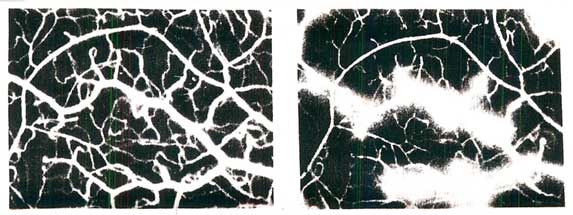
Figure 1. Before and after photos: Superoxide was injected into the bloodstream of hamsters, and ischemic arterial damage resulted. This induced ischemia was totally reversed when strong antioxidants contained in ACF228™ were subsequently injected into damaged arteries.
The third line of defense
Our third line of defense is what I call membrane-bound vitamins E and C. These two antioxidants further eliminate active oxygens that have escaped the first two lines of defense. Please note that the membranes of our cells and mitochondria cannot contain more than 2 percent vitamin E molecules by volume.
However, recent research (2) has indicated that a potent vitamin-E –type antioxidant, tocotrienol, concentrates in the membranes of endothelial cells. In rodent experiments, 40 percent of mice receiving tocotrienol survived a lethal dose of hydroxyl-radical-type radiation versus 100 percent of control mice that died.
Second, in human clinical studies, tocotrienols are known to significantly reduce stroke volume and loss of connectivity between different areas of the brain.
Third, tocotrienols work against inflammation especially when combined with other antioxidants (ACF-228™). One significant anti-inflammatory effect is the reduction of arterial ‘stiffness’ (which can be measured with a Bio-Cuff™).
In summary, vitamin C and special types of vitamin E seem to reduce the toxic effects of free radicals and protect vital membranes and DNA.
The fourth line of defense
Our fourth line of defense is the ubiquitous and powerful antioxidant glutathione. According to recent research (1, 3), our bodies only produce sufficient glutathione by maintaining youthful levels of powerful anabolic hormones such as IGF-1 and hGH (human growth hormone). According to Yigashi et al. (2013); “The observed antioxidant effect of IGF-1 may contribute to maintaining vascular integrity by counteracting oxidative stress, thereby limiting atherosclerosis development.” (3)
During aging, we develop increasing and ongoing deficiencies of these two vital anabolics (hGH and IGF-1) as well as decreasing levels of many other essential anabolics, such as testosterone, estradiol, DHEA (4) and melanocyte stimulating hormone (MSH2). Consequently, these ubiquitous and ongoing deficiencies cause further deficiencies of our fourth line of defense, glutathione. Unfortunately, we cannot supplement glutathione or these hormones by oral tablets or capsules, with the single exception of DHEA.
For example, our vital lung epithelial cells must maintain high concentrations of glutathione during aging, or we may develop asthma, chronic obstructive pulmonary disorder (COPD), or other lung problems. By ‘high concentrations,’ I mean that our epithelial cells should maintain a normal gradient of 140:1, lung-cell glutathione versus bloodstream glutathione. This extreme gradient renders harmless the active oxygens and free radicals formed in our sensitive lung cells when we breathe pounds of oxygen daily (1).
Is it dangerous to breathe?
Our sensitive lung cells continuously absorb oxygen gas. In order to prevent oxidative tissue damage—think of rusting iron or nuts—we must prevent oxidative damage by generating large quantities of fresh glutathione daily. Parenthetically, when asthma patients inhale synthetic medicines such as corticosteroid sprays, these remedies increase epithelial cell metabolism and perhaps even increase glutathione somewhat. But after many years of ‘revving up the system’ with synthetic steroids, serious side effects often develop.
Free radical and inflammatory health – problems resolved with natural solutions
Thanks to the scientists at International Antiaging Systems, these lung difficulties and side effects can be overcome by employing completely natural solutions. Instead of taking synthetic sprays and medications, asthma and other lung disorders can be successfully remedied by supplementing with the new product, ACF228 Breathe Easy™.
ACF228 Breathe Easy™ is an inhaler that contains superabsorbent glutathione. Thus, this superabsorbent glutathione is combined with other patented ingredients that halt symptoms of asthma, COPD and other lung difficulties within a few minutes of application!
Deficiencies of the four lines of defense
If there are deficiencies in the four lines of defense, our bodies naturally respond with an inflammation called edema. Edema causes a puffy appearance, which is seen even in otherwise healthy and athletic people such as Sylvester Stallone and Arnold Schwarzenegger. If you doubt this statement, please peruse past and present photos of these two movie stars. You will observe that even though both men are very muscular and athletic, as they were during their younger days, both have acquired facial puffiness due to inflammation caused by unchecked free radicals and active oxygens that have run amok and damaged tissue. In other words, free radicals and active oxygens have escaped their four lines of defense, causing havoc and edema throughout their bodies, especially in their facial tissues.
Thus, I strongly recommend the consumption of natural anti-inflammatories such as curcumin and Boswellia twice daily. Boswellia, combined with DHEA, works wonders by abating swelling and dark circles around the orbitals of the eyes. Eminent antiaging scientist Ward Dean, M.D., has written numerous articles on about Boswellia and he recommends it as his premier anti-inflammatory treatment. Try Boswellia, DHEA and curcumin and experience how natural remedies will improve your inflammation, health and quality of life.
Conclusion
Many of the most toxic substances for humans on the planet are generated either internally in our cells or externally by radiation. As we age, we naturally defend against these toxins with our cells’ four lines of defense. When these defenses fail, we develop diseases of aging, such as atherosclerosis and breathing problems. First, we can boost our four lines of defense with supplements such as Can-C™, ubiquinol (CoQ10), centrophenoxine, ACF228™ Breathe Easy™, hGH and IGF-1. Furthermore, we can naturally diminish consequent inflammation by twice-daily treatments with DHEA, curcumin and Boswellia.
Notes
We should avoid sugar: As little as eight tablespoons of sugar daily may also cause metabolic syndrome. Other examples of high gradients critical to health in the human body include iodine. Without sufficient iodine in our bloodstream, our thyroid glands cannot manufacture sufficient thyroid hormones and this effect exposes us to hypothyroidism, cancer and a less-than-optimal immune system. Zinc, selenium and copper: Without sufficient zinc, selenium and copper in our bloodstream, our cells cannot produce sufficient SOD, our second line of defense against a daily cascade of superoxide radicals. Gamma tocotrienol- endothelial cells seem to concentrate this important antioxidant in the intestine and lungs.
References
1. R. Lippman, Stay 40 (Denver, Colorado: Outskirts Press, 2009).
2. Hauer-Jensen, M., Focus Magazine, May 2014: pp. 13-16 & 21-22.
3. Y. Higashi, et. al., “Insulin-Like Growth Factor-1 Regulates Glutathione Peroxidase Expression and Activity in Vascular Endothelial Cells: Implications for Atheroprotective Actions of Insulin-Like Growth Factor-1,” Biochim. Biophys. Acta. 1832, no. 3 (March 2013): 391–399.
Hertoghe, T., Nabet, J.J., DHEA l’hormone du mieux-vivre (Paris, France: Presses du Châtelet, 2002).
